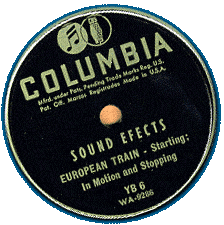"Bizarre Solutions to Trivial Problem"
This fine tome describes, among other things, the unnecessarily complicated connections used by the Quintet on various occasions. You open it at random and read about the connections made for the train engine in "Night Train":
 "...the rubber bands broke, so this
idea was rejected. Instead we used the Boss DR-110 Dr Rhythm as rhythmical
engine. A suitable rhythm was programmed and accent was added to all sixteenth
notes, since the little trig out jack sends trig pulses according to the
accents. From this loose, dangling jack a cable was connected to the Claes
Ohlsson Patch Master 2000, which split the signal into three.
"...the rubber bands broke, so this
idea was rejected. Instead we used the Boss DR-110 Dr Rhythm as rhythmical
engine. A suitable rhythm was programmed and accent was added to all sixteenth
notes, since the little trig out jack sends trig pulses according to the
accents. From this loose, dangling jack a cable was connected to the Claes
Ohlsson Patch Master 2000, which split the signal into three.
The first trig signal was sent to the Roland SH-101 and served as external clock for the built-in sequencer. This had be programmed with a rhythmic "du-dunk" pattern in another meter (meant to emulate wheels against the rails).
The second trig signal went to the trig input for the Brass section on the Korg Triden (on which one key had been taped down). A percussive filter resonance sound was set up and sent through the built-in flanger, set to a slow sweep with medium high feedback. To vary the sound further, the SH-101 send CV to the Brass filter frequency as well. One should note that the Trident trigs on "low" trig (gnd) while the sent signal was "high" - meaning the Trident was triggered slightly after the other components. By mutual agreement, this was considered to create a better swing feel.
The third trig signal was supposed to go to the Nord Lead, but we had no regular converter between analog trig/gate and MIDI. Instead we found the little control box for a ddrum Padstation (MIDI drum pads), which also had a trig input jack for connecting a bass drum pedal. The signal was connected to this jack, converted to MIDI notes and sent into Cubase VST. In the program, the signal was divided again, sending separate signals to two channels on the Nord Lead (one of these signals having been processed in VST's MIDI delay effect). The Nord Lead got to play "vague train ambience" and "noisy train shuffling", the latter sound with a slow LFO-filter modulation.
The machine was started, and all sound sources were recorded in one take (some after having passed the Phaser effect in the Zoom Studio 1201).
Now it was time to add melody and solo parts, causing Löfvberg to get out the rubber bands again and..."